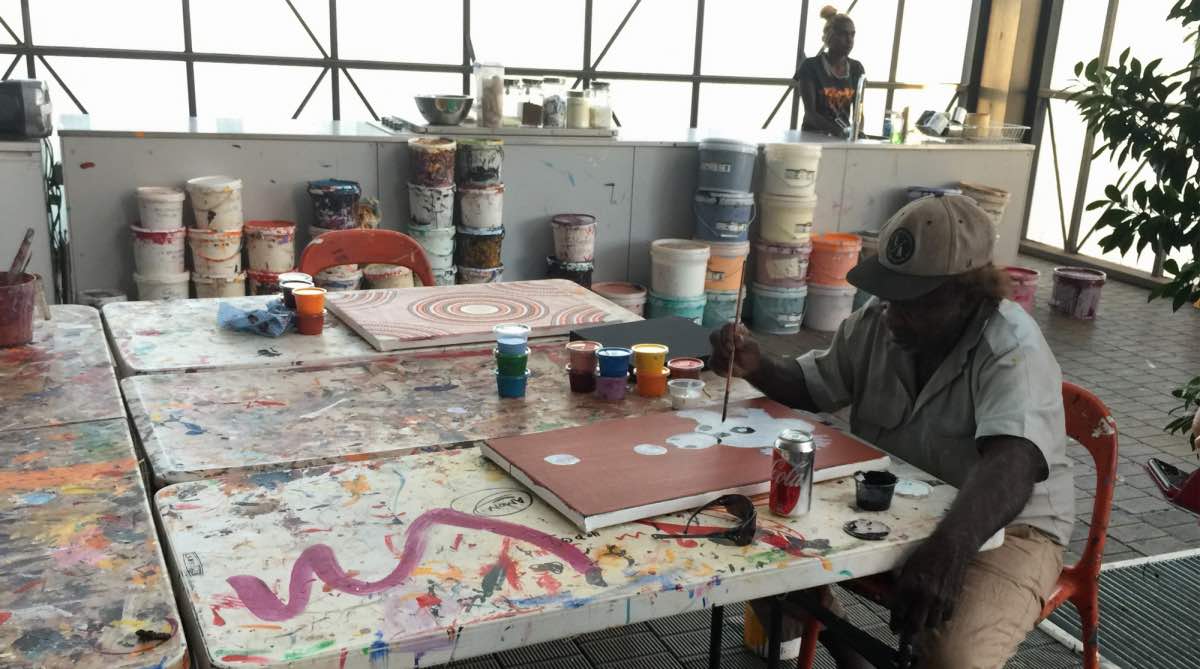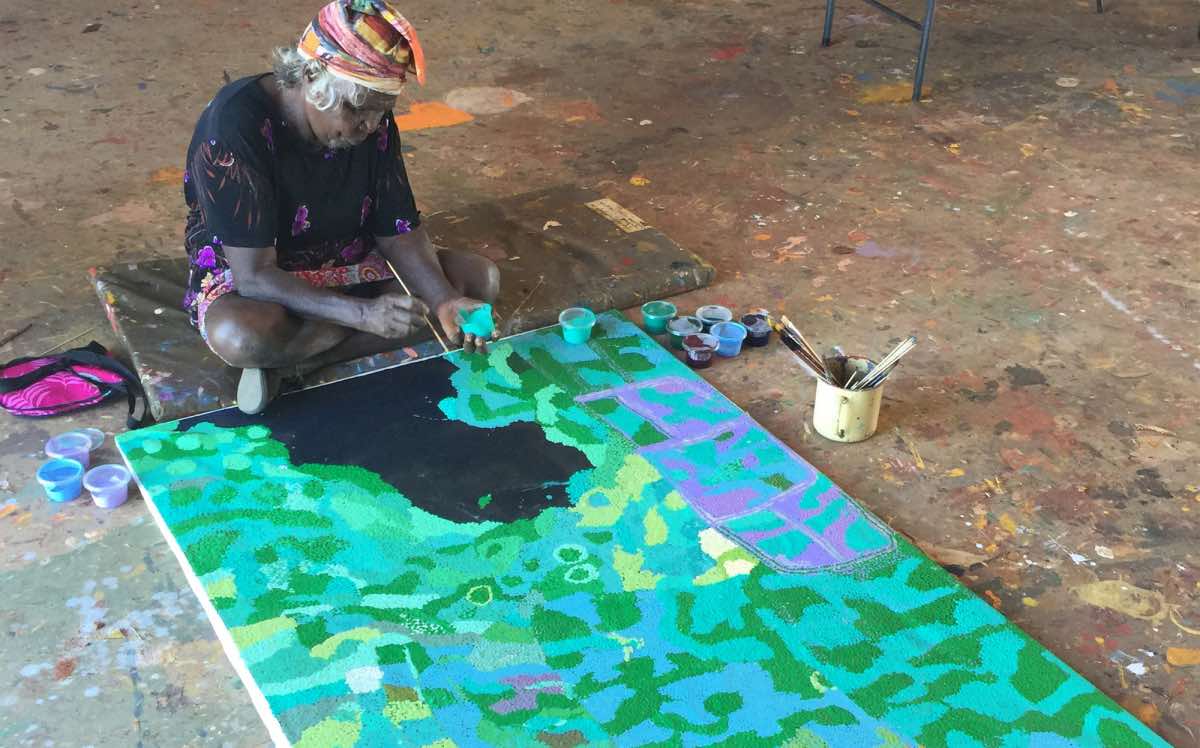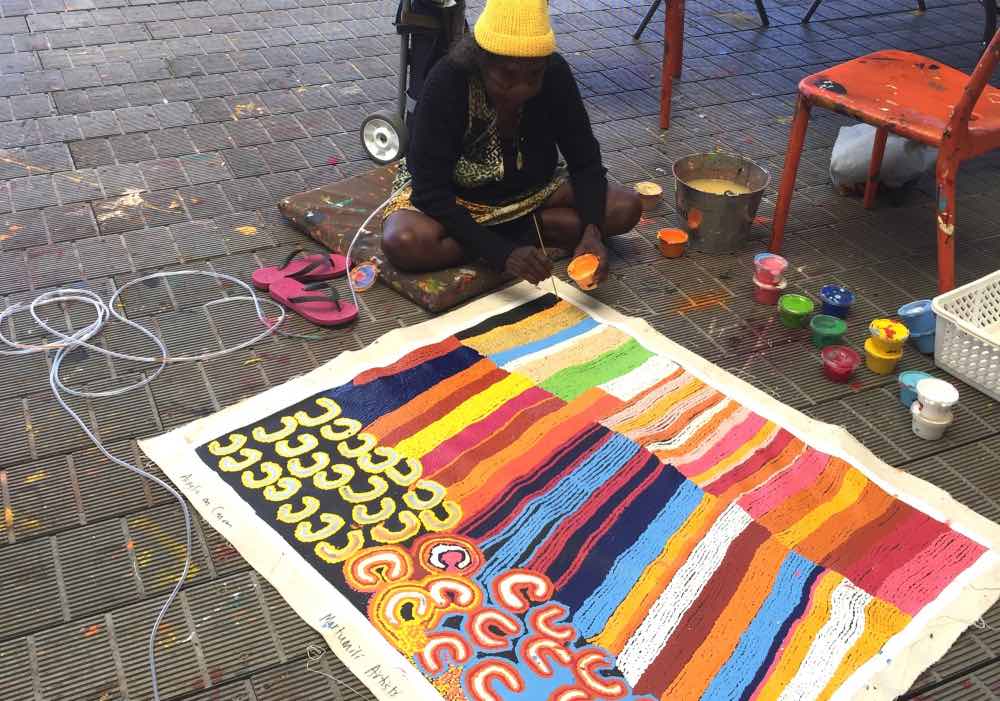Visiting Art Communities in Australia’s North West
In this interview Japingka’s David Wroth talks with American art collector John about his recent experience of visiting art communities in Australia’s North West.
David: It’s great to see you back here in Fremantle. I believe you’ve been flying over the Kimberley to some pretty interesting places. Where have you been and what was it like?
It was an amazing life experience. We spent five days going to various communities in the far north-west. We started in Broome and made our way up through Kalumburu.
We visited some remote communities and saw artworks by various artists. Some artists were just beginning their careers. Others were quite well known and their work is regarded as culturally representative of their area or even a particular painting style.

The interesting thing for me as an American was seeing the vast landscape as we flew from one community to the next. I saw marks in the landscape from an aerial view. I found it just amazing how the Indigenous people were able to translate that into their paintings. They use natural ochre or in other communities acrylics to convey the exact feel of the landscape, without ever having had the aerial view as we experienced it.
As we moved along into different regions towards the Great Sandy Desert we saw from the air these incredible strips that were the lines of sandhills. This view of the landscape directly translates into their paintings.
The landscape endures such harsh weather. Having said that, as it gets put into a painting it really transitions into something quite unique and beautiful. Those two perspectives give me an understanding, not only of the painting, but also the culture. I start to learn about the way that the Indigenous people live and how they’re translating their culture and lifestyle into these paintings. You can take that away and capture a better understanding about who they are as people. This applies both from the past and the present.

When did you first see Aboriginal art?
It was here in Japingka Gallery. I was brought in by my cousin and introduced to Aboriginal art. I enjoyed seeing some of the pieces and learning about some of the more established senior artists. I got to see the different styles and understand the different parts of the country that those styles represent. That I think was probably about 15 years ago.
You’ve gone from first seeing works in the Gallery and now flying around some of those really remote communities and over that vast landscape to get a sense of where it all originates from.
Absolutely. I have a growing interest in seeing more and reading more about this art. In one of the areas that we went into I saw more of a tribal interpretation of their culture. There were more stories directly being created that included figures of people or spirits. This was so different from the dot paintings of the desert landscape. For me that was one of the most interesting things to see. I enjoy the diverse ways in which the artists paint to communicate their stories. Not just from the landscape but also from their ancestral traditions that are still being lived and from the Creation Stories that they carry forward and believe in.
The initial kind of appeal of this art, at least for me, is that it seems very contemporary. It catches your eye from that standpoint. As you look deeper into it and you learn more about it, you start to understand some of the meanings behind it. This gives not only an interpretation as to what that painting is about, but also the culture that it comes from.

It also gives more understanding of how this art movement is evolving. You can see that from looking at some of the past artists, like Rover Thomas and others that we’ve talked about and seen here in the Gallery.
The new artists that are coming up are depicting their culture in different ways. They still maintain the baseline of their stories, and they approach it in a more interpretive way. For somebody new coming in, it’s that initial transition from looking at it as more contemporary approach to art, and then realising there’s much, much deeper meaning and that makes it more special, at least for me.
View More:
